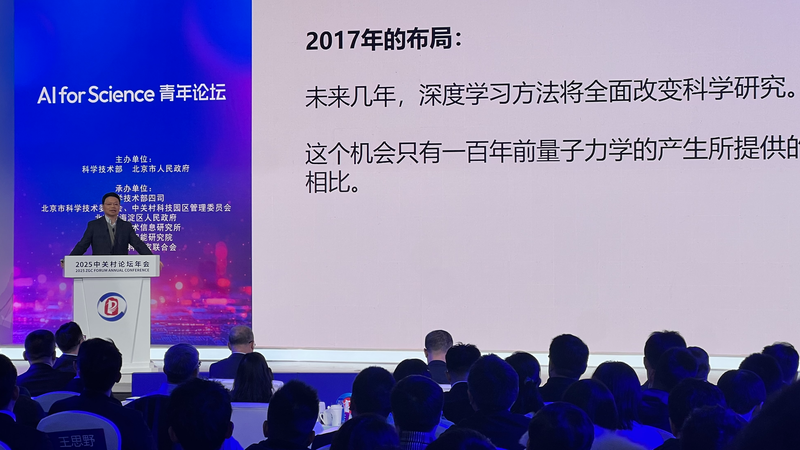The 2025 Zhongguancun Forum lit up the stage with revolutionary ideas as experts from over 100 countries and 1,000 speakers gathered to redefine the future of research. 🚀 At the heart of the discussions was a bold challenge: while AI is reshaping scientific tools almost daily, the process of true discovery remains a distinctly human adventure.
E Weinan, a distinguished member of the Chinese Academy of Sciences and a dual-appointed professor at Peking University and Princeton University, captured the moment with his keynote. He noted, "We still don't have a proper large language model for science," emphasizing a pressing need to fully harness data, computing power, and talented minds in this new era. His words resonated with many, sparking debate over how to merge holistic resources with the relentless drive for innovation.
One striking insight was that "AI for Science" doesn’t even have a Chinese equivalent yet—a sign of its emergent status despite early strategic plans on the Chinese mainland as far back as 2017. Zhou Bowen, director of the Shanghai Artificial Intelligence Laboratory, stressed that while existing large language models have revamped research tools and study subjects, a true scientific revolution will require end-to-end enhancements.
In a ground-breaking move, Zhang Linfeng, founder and chief scientist of DP Technology, introduced a first-of-its-kind platform for automated cross-disciplinary experiments. Headquartered in Beijing, DP Technology is pushing the frontiers with projects such as the Bohrium Scientific Computing Space Station and the Science Navigator AI platform. These platforms, which blend AI, physics modeling, and high-performance computing, are already accelerating breakthroughs in drug discovery, materials science, and energy technologies. As Zhang passionately explained, this wave of AI for Science has the potential to break efficiency bottlenecks across diverse engineering domains—imagine a future where scientific research feels as dynamic as the latest Marvel blockbuster! 💡
A newly released report, the latest edition (March 2025) of the Chinese mainland's AI for Science Innovation Map by the China Institute of Science and Technology Information, shed further light on the progress and challenges in this field. With 20 national scientific data centers now operational across the Chinese mainland, the report highlights vast scientific data resources and ongoing data infrastructure development. However, it also points out hurdles like high data acquisition costs, inconsistent formats in engineering fields, and sensitivity constraints in specific scenarios.
Another fascinating takeaway: the Chinese mainland and the United States are leading the globe in co-authored publications and citations in AI for Science research. This strong collaboration across life sciences, earth sciences, and materials science underlines the importance of combining international expertise to fuel the next wave of innovative discoveries.
Overall, the forum painted a picture of an exciting future where cutting-edge tech and human ingenuity converge to push the boundaries of scientific research. As we look ahead, the journey of AI for Science continues to inspire and transform the way we explore our world.
Reference(s):
AI for Science: Bridging the gap between tools and systemic innovation
cgtn.com




